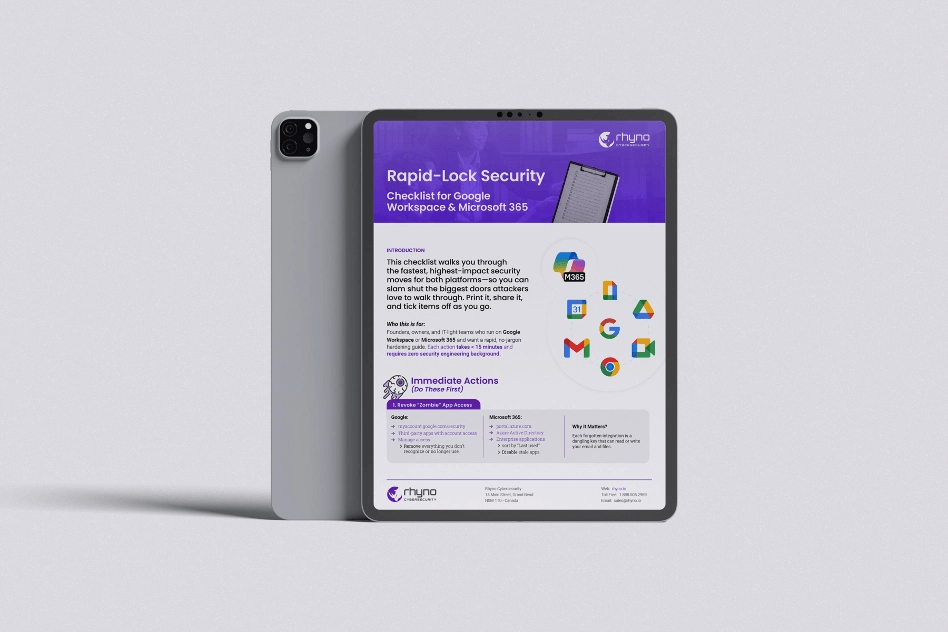Google Rolls Out New Tool to Help Businesses Report Review-Based Extortion
The internet has become a digital minefield, with everyday users and businesses under constant attack from a growing army of scammers. In a new announcement, Google confirmed it is rolling out a special tool to help business owners fight back against a particularly nasty Report Review-Based Extortion scheme, but the move comes as the company also warns of a massive surge in other complex digital threats.
This scramble to fight fraud is happening just as a bombshell report claims that Meta, the parent company of Facebook and Instagram, may be making billions of dollars in revenue from the very scam advertisements it’s supposed to be policing.
Google Fights Back Against “Review Bomb” Extortion
Google is taking direct aim at scammers who are holding small businesses hostage on Google Maps. The company acknowledged a common and damaging tactic where criminals flood a business’s online profile with a wave of fake, one-star reviews. This practice, sometimes called “review bombing,” can instantly destroy a company’s hard-earned reputation.
But the attack doesn’t stop there. According to Google’s Trust & Safety division, the scammers then contact the distressed business owner, often using third-party messaging apps. The message is simple: pay a ransom, or the flood of bad reviews will continue.
These threat actors are counting on business owners panicking at the sight of their public rating collapsing and paying the fee to make the problem go away. To combat this, Google is launching a new, dedicated form. This tool will allow business owners to specifically report these extortion attempts, giving Google’s moderation teams a direct way to investigate and remove the fraudulent reviews and bad actors.
The Scam Epidemic: A Five-Front War
While the review bombing fix is a specific solution, Google also warned that this is just one piece of a much larger, more dangerous puzzle. The company detailed several other types of scams that are exploding in popularity, designed to trick people at work, at home, and on their phones.
Scammers are heavily targeting people looking for employment. They create fake job postings on what look like legitimate websites and even create fake recruiter profiles. Their goal is to trick hopeful applicants into providing huge amounts of sensitive personal data by having them fill out fake application forms or participate in bogus video interviews. In some cases, they convince the victim to download a “required” piece of software that turns out to be dangerous malware, like a remote access trojan (RAT), which gives the hacker full control of their computer.
Con artists are also cashing in on the hype around artificial intelligence. They create ads, hijack social media accounts, and even build fake software projects to promote what they claim are “free” or “exclusive” versions of popular AI tools. Unsuspecting users who click these links end up downloading malicious apps, “fleeceware” apps that quietly sign them up for expensive hidden subscriptions, or fake browser extensions that steal their data.
A similar tactic is used with malicious VPN apps. Scammers prey on people’s desire for internet security, especially during major world events. They offer fake VPN services that promise to keep users safe and anonymous. Once installed, these fake apps do the opposite: they act as a gateway for other malware, including information stealers and banking malware designed to drain bank accounts and cryptocurrency wallets.
Perhaps the most cruel scam of all is the “fraud recovery” scheme. This tactic targets people who have already been victims of a scam. The criminals pose as helpful agents from a law firm, a trusted company, or even a government agency like the FBI, which issued a warning about this very threat. They promise the victim that they can recover their lost money for a fee. Instead, they just scam the victim a second time, stealing even more.
Finally, Google warns of the ever-present seasonal holiday scams. Around major shopping periods, scammers blanket social media with counterfeit offers and fake deals that look too good to be true. These are all designed to steal credit card information and personal data from unsuspecting shoppers.
Is Meta Profiting from the Problem?
While Google is publicly detailing its fight against these schemes, a shocking report from Reuters suggests its main competitor is facing a much different, and perhaps self-inflicted, problem. An internal Meta document from December 2024, viewed by the news agency, suggests that the company might be earning billions of dollars every year from ad marketing scams and illegal products on its platforms.
The report claims these scam ads could be responsible for as much as 10.1% of Meta’s total revenue, which would equal approximately $16 billion.
The document alleges that Meta has been dangerously soft on high-spending “bad actors.” It claimed that “high value accounts” were allowed to rack up more than 500 “strikes” for policy violations without being shut down. In contrast, a small advertiser might be flagged at least eight times for financial fraud before Meta would block them.
Even more troubling, the report suggests that instead of banning these fraudulent advertisers, Meta simply charged them higher rates to continue running their ads as they collected more strikes. The company would reportedly only ban an advertiser if its automated systems were 95% certain they were committing fraud.
This policy, accordingto the report, has allowed an estimated 15 billion “higher risk” scam advertisements to be served to users on Facebook and Instagram every single day.
In response, Meta stated that the 10.1% revenue estimate was “rough and overly-inclusive.” A spokesperson said the company has been actively fighting this problem, removing more than 134 million pieces of scam ad content so far in 2025.


